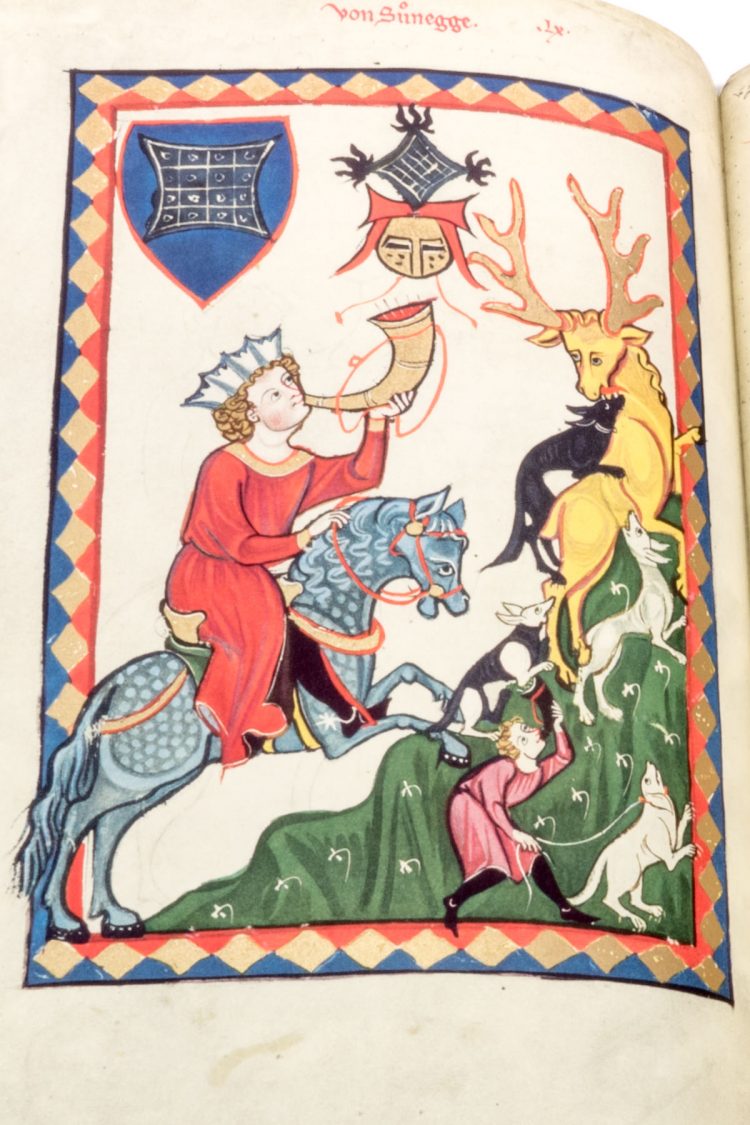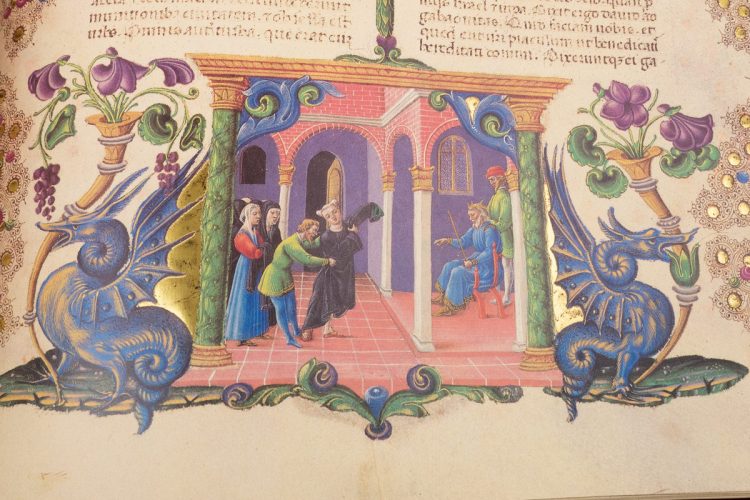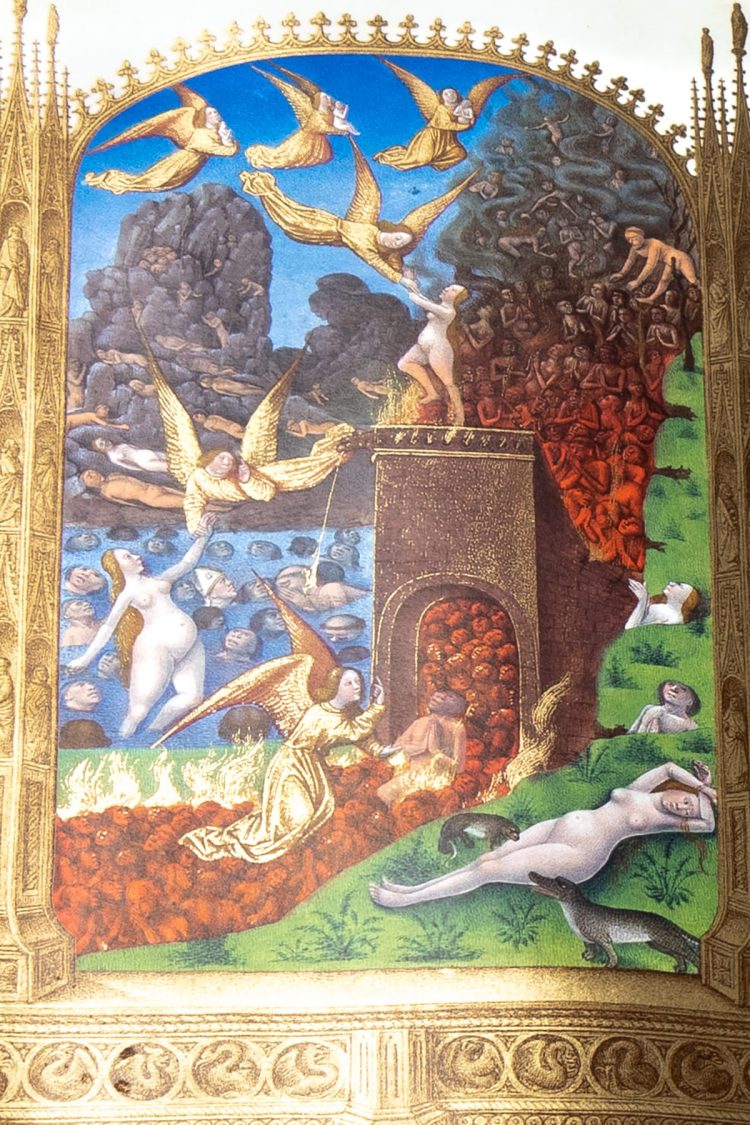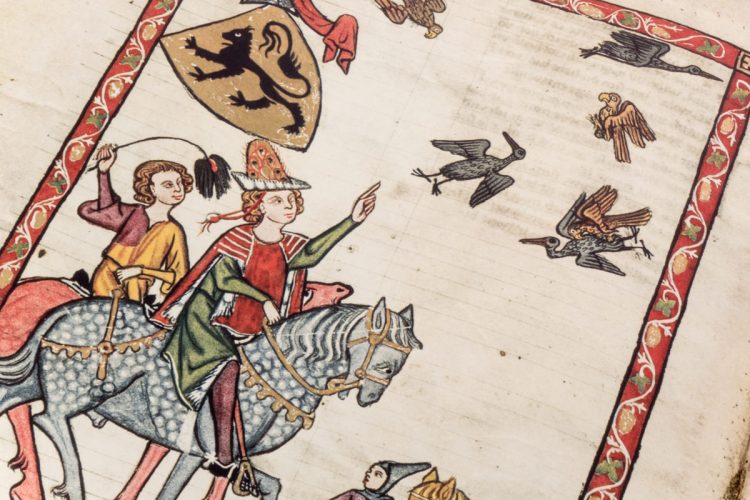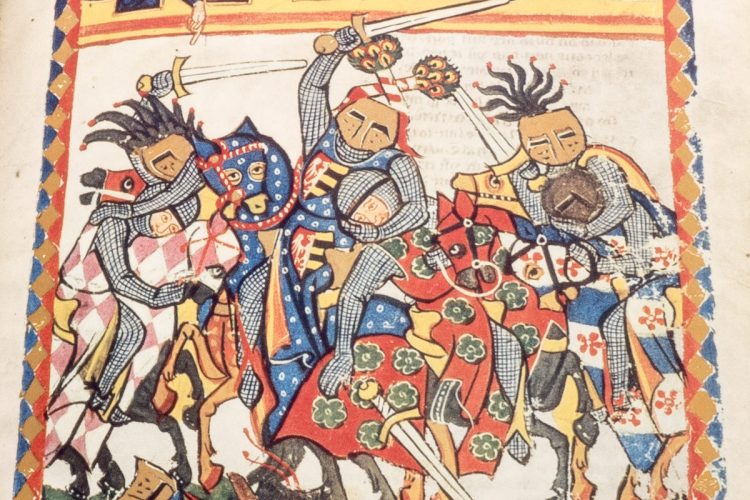Music is ethereal, but manuscripts go down in history. Volumes such as the Codex Manesse have preserved the texts of thousands of Medieval courtly songs. Find out more in today’s Alumina article!

There are works of art which unmistakably define, and indeed are almost synonymous with, an epoch, a movement or an artistic technique.
In the field of manuscript illumination, this is the case with Très Riches Heures du Duc de Berry for Franco-Flemish illumination, Bibbia di Borso d’Este for Italian illumination and Codex Manesse for German illumination, given that the volume, pride of the Universitätsbibliothek in Heidelberg (the famous Palatine Library, where it is cataloged as Cod. Pal. germ. 848) can be considered the single most important item of Germanic book heritage “before Gutenberg” both for its lavish decoration and its textual content: the largest, richest and most important literary source relating to those “troubadours” of Mediaeval courtly song known as Minnesänger.
The Minnesang was a verse composition recited at Germanic feudal courts by noble enthusiasts of this poetic genre, often in the form of a song and accompanied by stringed instruments.
Inspired by Arabic love poetry, which arrived in the West at the time of the Crusades, or, more likely, by the Provençal troubadour tradition, it too imported from the German Crusades or filtered through into Germany via the Rhine border, the Minnesang, so called in Middle High German because it was a “song” (Sang) dedicated to love between a man and a woman (Minne), was a verse composition recited by noble enthusiasts of this poetic genre, often in the form of a song and accompanied by stringed instruments, before a learned and refined audience at the Germanic feudal courts.
Realised in the early 14th century before about 1340, probably in Zurich or in the region of Lake Constance, the 426 fine parchment folios of the Codex Manesse (or Grosse Heidelberger Liederhandschrift) contain almost 6000 verses by 140 authors from between 1150-1160 and 1330-1340, 137 of whom are portrayed in full-page spreads at the beginning of their respective compositions, with added name and often the family coat of arms.
Text written by Gianfranco Malafarina for Alumina — Pagine Miniate.
Subscribe to Alumina today!



